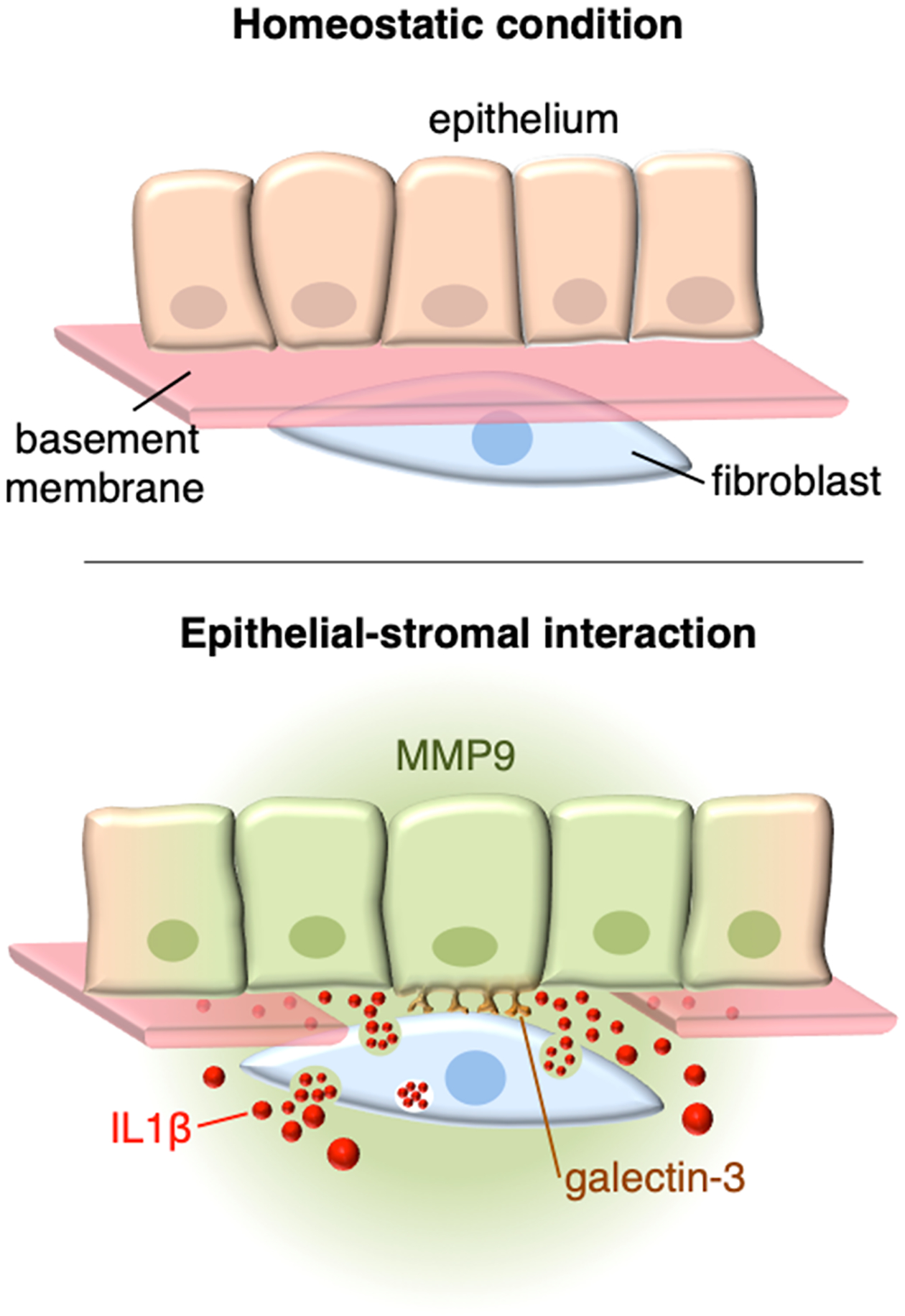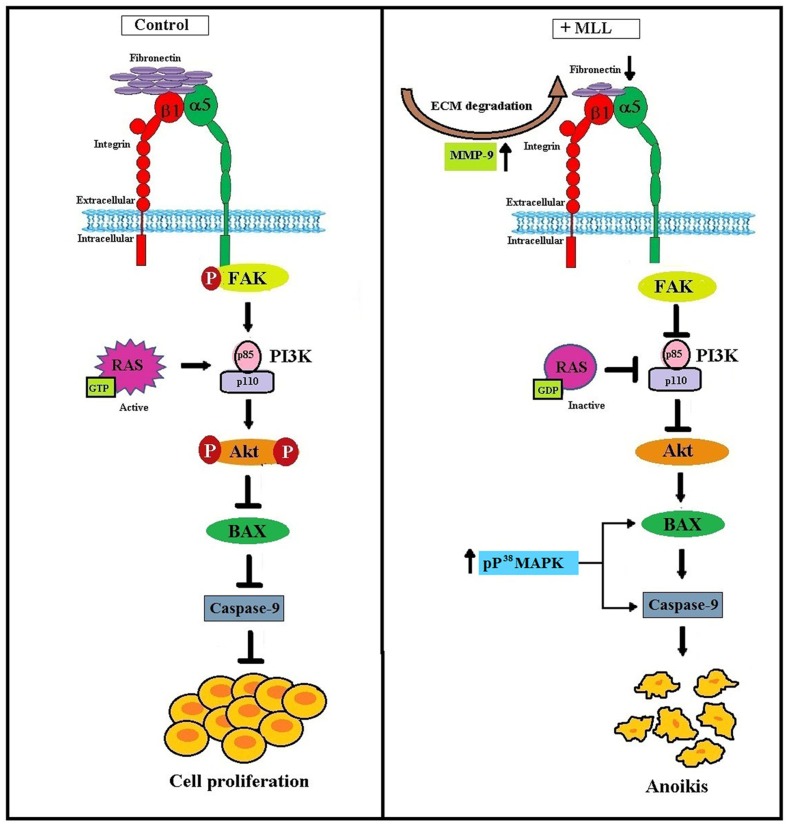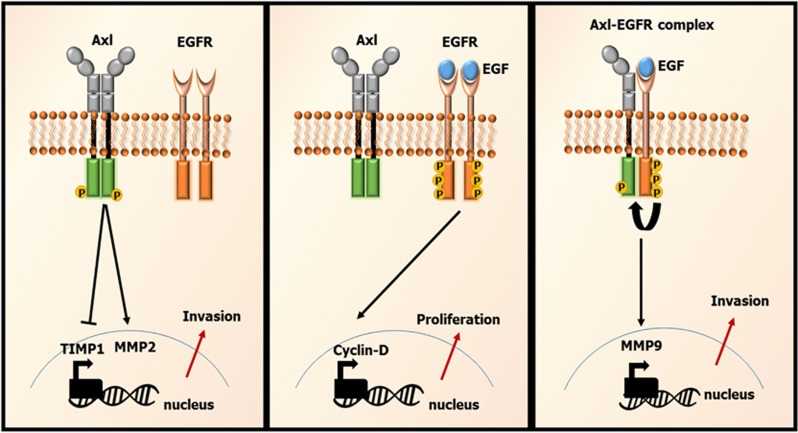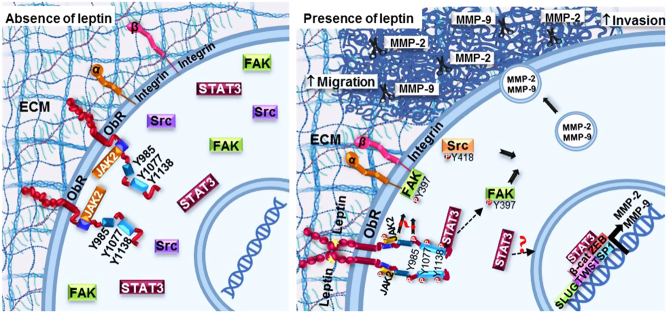MMP9 Target Analysis Report Summary


About the Target
Based on the provided context information, here is a comprehensive summary of key viewpoints related to MMP-9:
MMP-9 degradation: In steady-state conditions, cytosolic beta-catenin is phosphorylated by the GSK complex, leading to its degradation by the proteasome. This is an important mechanism for regulating beta-catenin levels [1].
Wnt/beta-catenin pathway: Wnt ligand production, induced by TGF-beta exposure, stabilizes the GSK complex at the cell membrane. This results in reduced beta-catenin degradation and allows for its translocation to the nucleus, promoting MMP-9 expression [1].
AR and MMP-9 in cancer: In bladder cancer (BCa), the androgen receptor (AR) binds to a specific region (ARE1) and promotes the expression of pre-AR and ARC1, leading to increased MMP-9 signaling and cell invasion. In prostate cancer (PCa), AR prefers to bind another region (ARE2), causing a decrease in pre-AR and ARC1 production. Enzalutamide (Enz) can prevent AR from binding these regions, affecting MMP-9 expression [2].
MMP-9 and tumor cell proliferation: MMP-9 secreted by ovarian cancer cells (OVCA433) in co-culture with M2 macrophages (THP-1 or MDMs) promotes tumor cell proliferation. Knockdown of MMP-9 in OVCA433 or M2 macrophages significantly reduces co-culture-induced proliferation, suggesting a feedback loop involving MMP-9 and HB-EGF release [3].
MMP-9 and basement membrane disruption: Galectin-3, produced by epithelial cells, interacts with fibroblasts and triggers the synthesis and secretion of IL-1beta. This paracrine signaling leads to the activation of the MMP9 promoter in epithelial cells, ultimately remodeling the collagenous extracellular matrix [4].
MLL-induced anoikis: In MCF-7 cells, MLL treatment upregulates MMP-9 expression, resulting in extracellular matrix degradation and reduced fibronectin (FN) expression. Decreased FN levels disrupt integrin receptor signaling, leading to decreased phosphorylation of FAK and reduced expression of PI3K/Akt. This ultimately triggers programmed cell death (anoikis) through the upregulation of pro-apoptotic factors [5].
Overall, these viewpoints highlight the diverse roles of MMP-9 in cellular processes such as degradation, signaling pathways, cancer progression, tissue remodeling, and cell survival.
Based on the provided context information, the key viewpoints regarding MMP9 are as follows:
Axl homo-dimerisation inhibits TIMP1 expression and promotes MMP2 expression, while EGFR homodimers promote CCND1 expression. On the other hand, EGFR-Axl hetero-interaction, with unidirectional activation of Axl by EGFR, leads to the activation of pro-invasive signaling pathways involving MMP9 as a central regulator [6].
Leptin induces the activation of FAK via Src and an independent mechanism from the canonical ObR pathway, leading to the secretion of MMPs, cell migration, and invasion in cultured models for breast cancer [7].
MMP-2, MMP-9, and MMP-14 play a crucial role in tumor invasion, progression, angiogenesis, and metastasis. Tumor cells degrade the basement membrane using these MMPs, allowing invasion and migration. Additionally, the secretion of MMP-9 and MMP-2 helps degrade the basement membrane of adjacent blood vessels, facilitating the formation of new blood vessels through VEGF-A signaling [8].
These viewpoints highlight the involvement of MMP9 in promoting invasive behavior in different cancer models and its role in degrading the extracellular matrix for tumor progression and angiogenesis.
Figure [1]

Figure [2]

Figure [3]

Figure [4]

Figure [5]

Figure [6]

Figure [7]

Figure [8]

Note: If you are interested in the full version of this target analysis report, or if you'd like to learn how our AI-powered BDE-Chem can design therapeutic molecules to interact with the MMP9 target at a cost 90% lower than traditional approaches, please feel free to contact us at BD@silexon.ai.
More Common Targets
ABCB1 | ABCG2 | ACE2 | AHR | AKT1 | ALK | AR | ATM | BAX | BCL2 | BCL2L1 | BECN1 | BRAF | BRCA1 | CAMP | CASP3 | CASP9 | CCL5 | CCND1 | CD274 | CD4 | CD8A | CDH1 | CDKN1A | CDKN2A | CREB1 | CXCL8 | CXCR4 | DNMT1 | EGF | EGFR | EP300 | ERBB2 | EREG | ESR1 | EZH2 | FN1 | FOXO3 | HDAC9 | HGF | HMGB1 | HSP90AA1 | HSPA4 | HSPA5 | IDO1 | IFNA1 | IGF1 | IGF1R | IL17A | IL6 | INS | JUN | KRAS | MAPK1 | MAPK14 | MAPK3 | MAPK8 | MAPT | MCL1 | MDM2 | MET | MMP9 | MTOR | MYC | NFE2L2 | NLRP3 | NOTCH1 | PARP1 | PCNA | PDCD1 | PLK1 | PRKAA1 | PRKAA2 | PTEN | PTGS2 | PTK2 | RELA | SIRT1 | SLTM | SMAD4 | SOD1 | SQSTM1 | SRC | STAT1 | STAT3 | STAT5A | TAK1 | TERT | TLR4 | TNF | TP53 | TXN | VEGFA | YAP1

